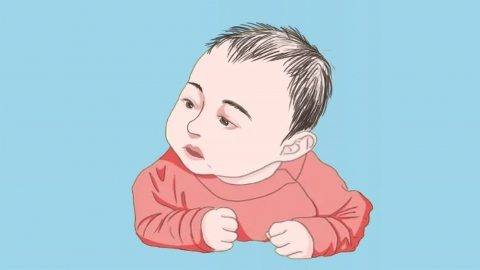What is the phenomenon of toddler's leg-clamping syndrome?
Leg crossing syndrome in young children usually refers to pediatric leg rubbing syndrome. In general, manifestations of pediatric leg rubbing syndrome include crossing or clenching the legs, accompanying body movements, occurrence in specific situations, changes in facial expression, and reduced responsiveness to external stimuli. When parents notice these behaviors, they should respond rationally and avoid excessive intervention. The details are as follows:
1. Crossing or clenching the legs
Children with this condition often forcefully cross or press their legs together. Some may also stiffen or alternately rub their legs. These actions can last for several minutes, during which the leg muscles remain tense. Sometimes, mild sweating may occur due to the physical effort. These behaviors typically appear when the child is quiet or alone, leading parents to mistakenly interpret them as mere "mischievous behavior."

2. Accompanying body movements
In addition to leg movements, children may exhibit body rocking, such as swaying the hips back and forth or twisting the waist. Younger children may夹 their legs against objects like chairs or bed edges, using friction against these objects while rhythmically moving their bodies to experience a particular sensation. As a result, their posture during episodes tends to be fixed and repetitive.
3. Occurrence in specific situations
Symptoms frequently occur in specific contexts, such as lying in bed before sleep or upon waking, sitting quietly on a sofa or chair playing, or after urination or during bathing. In these settings, the child's attention is highly focused and there are fewer external distractions, making such behaviors more likely to occur. Therefore, parents should pay closer attention to their child’s behavior during these times.
4. Changes in facial expression
During an episode, the child may display distinct facial expressions, such as a blank stare, flushed face, mild sweating, or slightly rapid breathing. However, there is no sign of pain; instead, the child appears relaxed or deeply concentrated. Facial changes occur simultaneously with leg movements and gradually return to normal once the movements stop. Thus, facial expression can help determine whether an episode is occurring.
5. Reduced response to external stimuli
During an episode, the child shows diminished responsiveness to external stimuli such as sounds or light. Even when called or gently tapped by a parent, the child may respond slowly or not at all, as their attention is intensely focused on the repetitive movement. They typically only regain awareness of their surroundings after the episode ends naturally. Therefore, it is not advisable to forcibly interrupt the child during an episode.
In addition, parents should ensure proper genital hygiene to prevent local inflammation or itching that might trigger leg-rubbing behaviors. Avoid scolding or punishing the child during episodes, as this may increase psychological stress. If the behavior occurs very frequently or is accompanied by irritability, emotional distress, or disturbed sleep, parents should promptly take the child to see a pediatrician or child health specialist to rule out other underlying medical conditions.









